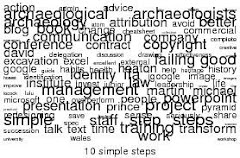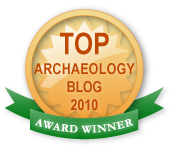I am not a lawyer, but I have seen and signed a lot of publishing agreements, and there is a lot of confusion out there, especially now that digitisation has given new life to old and forgotten print articles.
Whose copyright in the first place?
Copyright belongs to the creator initially, automatically, unless it is being created as part of your employment, in which case it is usually the employer's. So for most commercial archaeologists, it isn't their own perosnal property. Things may be complicated by the inclusion of otehr material (illsutrations, mps and photographs) with their own rights owners. And even more complex if the original developer was one of those who require their contractors to assign copyright to them - so that a unit and its staff may have to ask permission to publish their report.
Publishing agreements
The terms on which a publisher agrees to publish a work vary considerably. In commercial scientific publishing, it used to be standard to require authors to sign the copyright over to the publisher (this is now changing significantly as the open access movement has led to pressure to allow authors to keep copyright), while in archaeology, particularly for one-off volumes, authros were asked only for a licence. In most cases, until recently, the question as never raised: if there is no signed agreement ceding copyright to the publisher then it would still with the author (or employer or client). It is administratively convenient for publishers to hold copyright, allowing them to republish, sell in other markets, and handle incoming re-print requests without a lot of correspondence. On the other hand, it may mean that authors are (or feel) precluded from re-using their work themselves (in a book or on a website) or granting others the right to re-use it.
Authors faced with a strict demand for assignment of copyright have limited room for manouever - it may be completely non-negotiable (or said to be), or the author may be allowed to retain a licence so that they can do stuff in the future.
Economics
Aside from the question of what you might want to do (or authorise otehr to do) with your work, there is the question of who makes money out of it. The short answer is, alas, nobody. Most journals and book series riley on institutionl subscriptions from universities round the world as the main market - a few hundred at most. Although the rates may be high, these need to compensate for the high start-up costs for printing and distribution (it is only in the thousands when unit costs drop, beaing spread out over so many). So most journals do not pay their authors, editoirs or reviewers for initial publication rights. And they don't make a lot more from selling rights on, either - £50 or £100 for reprint rights. Relying on arcaheological publication fees for your pesnion is not a good plan. There is one possible route for income, though: the
CLA Sticker scheme, which collects fees from people who photocopy artciels and distribute them to regsietred authors. Unfortunately, you have to register your publications with them, and pay a small fee, to be included, and of the course this is only worthwhile if you expecte there to be a fair number of copies made (in which context it is worth pointing out that only twice in my life have I ever met anyone who has said they read on emy articles, let alone copied it, let alone paid a fee).
Saturday 30 January 2010
Copyright and the economics of archaeological publishing
Posted by
Martin Locock
at
15:54
0
comments
![]()
Labels: communication, law
Subscribe to:
Posts (Atom)






